The name durian originates from the Malay word duri (which implies thistle). Include the postfix – an and you have a thing in Malay. The word durian, as a rule, alludes to the natural product yet it can likewise mean the durian mash or substance (in fact called arils) that we eat, and furthermore to the tree. The durian natural product has a thick sinewy husk, secured by sharp spines or thistles. The tissue or mash is rich, white, yellow, or brilliant yellow which is firmly seasoned and strongly fragrant.
In the event that you’ve never been to Southeast Asia, it’s conceivable that you have never had the opportunity to experience the natural durian fruit, the scandalous and solid however troublesome Southeast Asian organic fruit that is well known in the local region. Be that as it may, when you have tasted the stinky natural fruit, it is an encounter you are not prone to overlook.
Description of Durian Fruit
Durian trees are large, growing to a height of 25–50 m (82–164 ft) depending on the species. The leaves are evergreen, elliptical to elliptical, and 10–18 cm (3.9–7.1 in) long. Flowers produced in groups of three to thirty together on large branches and directly on the trunk with each flower having a calyx (sepals) and five (rarely four or six) petals. Durian trees have a couple of blossoming and fruiting periods every year, Be that as it may, time shifts relying upon species, development, and areas.
A normal durian tree can bear fruit after four or five years. The durian fruit can hang from any branch, and matures three months after pollination. The fruit can grow up to 30 centimetres (12 in) long and 15 cm (6 in) in diameter and usually weighs one to three kilograms (2 to 7 pounds). Its shape varies from oblique to spherical, its husk colour from brown to its flesh ranging from yellow-red to species. Nine of the thirty species of Durio are edible fruit-producing ones: D. Zibethinus, d. Dulcis, d. Grandiflorus, d. Gravolence, d. CUTENGIS, DURIO LOVERUS, d. Macrantha, d. Auxilanus and D. Testis. The fruits of many species have never collected or properly examined, however, other species may contain edible fruits. Durian is somewhat similar to jackfruit, an unrelated species.
The King of Fruits – Durian Fruit
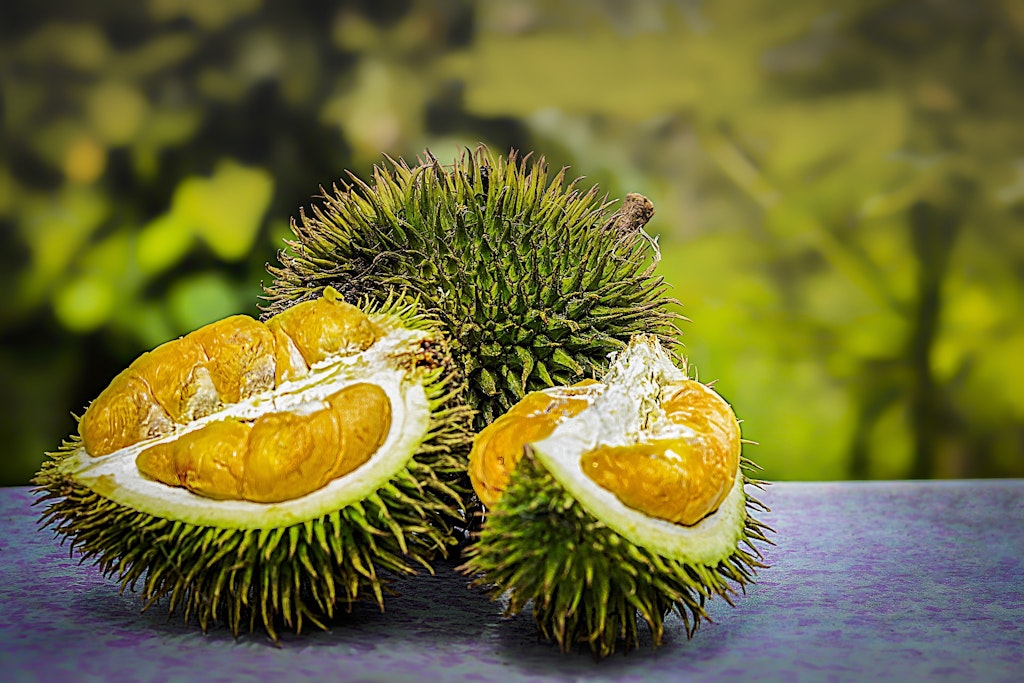
If “100 Things You Must Taste Before You Die”, the durian fruit is definitely in the top ten. As the undisputed ‘king of fruits’ in South-East Asia, this foreign modesty can be a real a marmite test for Westerners: you either love it or you hate it! Nonetheless, in contrast to Marmite, Durian’s disputable equivocalness doesn’t lie in its taste, which is heavenly, but instead its deplorable smell.
To give you an idea, the experience of tasting your first durian can be compared to eating custard cream, with a huge crowd of steaming athletes with a dash of belly in the men’s changing room and a fabulous dinner of raw onions and garlic is. Hmm…
Obviously, this may reduce your appetite for durian. So here is some vegetation first, before we delve deeper into the culinary properties of this most notorious fruit and know the true importance of its outrageous smell.
It’s a great fruit
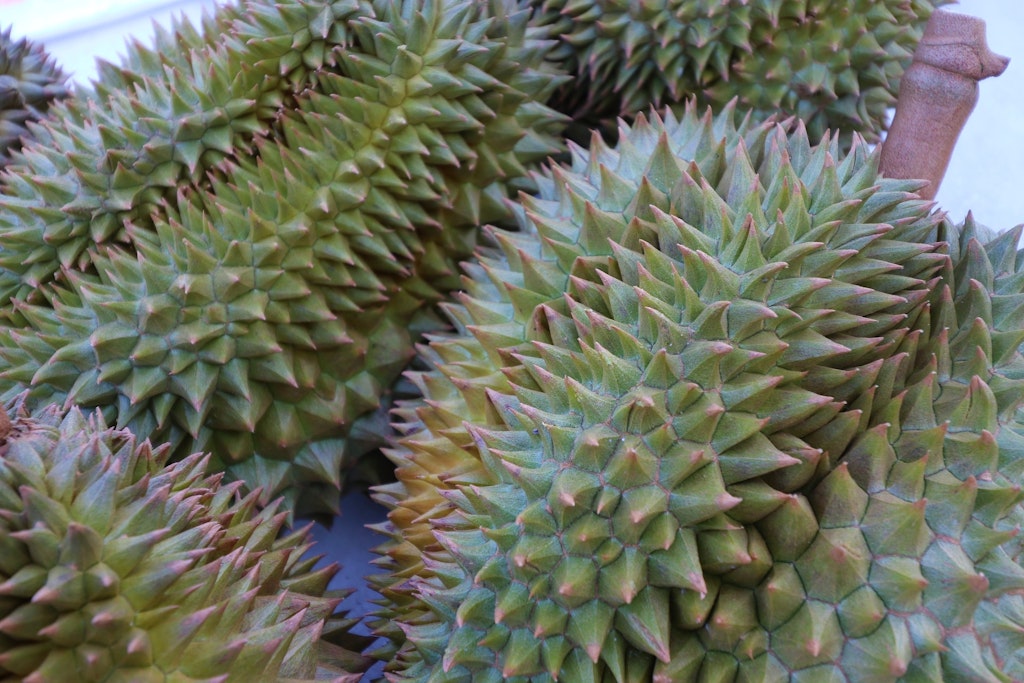
Despite the smell, durian is extremely healthy compared to many other fruits. Normally plentiful in iron, nutrient C, and potassium, durian lessens muscle quality, skin wellbeing, and even circulatory strain. In addition, a small durian contains 23g of dietary fibre which is almost all you need for your daily nutrition.
Yet, it is very important not to overeat, as in 2010 Malaysian politician Ahmed Lai Bujung rushed to the hospital complaining of breathlessness and dizziness after slapping himself on the durian.
Banned in public transport
Due to its excessive odour, Thailand, Japan, and Hong Kong have banned the durian fruit in public transport. In Singapore, durian fruit is not allowed on all types of public transport and even taxis have signs to tell you that they refuse to carry passengers carrying stinky fruits.
It has a unique appearance and an even more everlasting smell
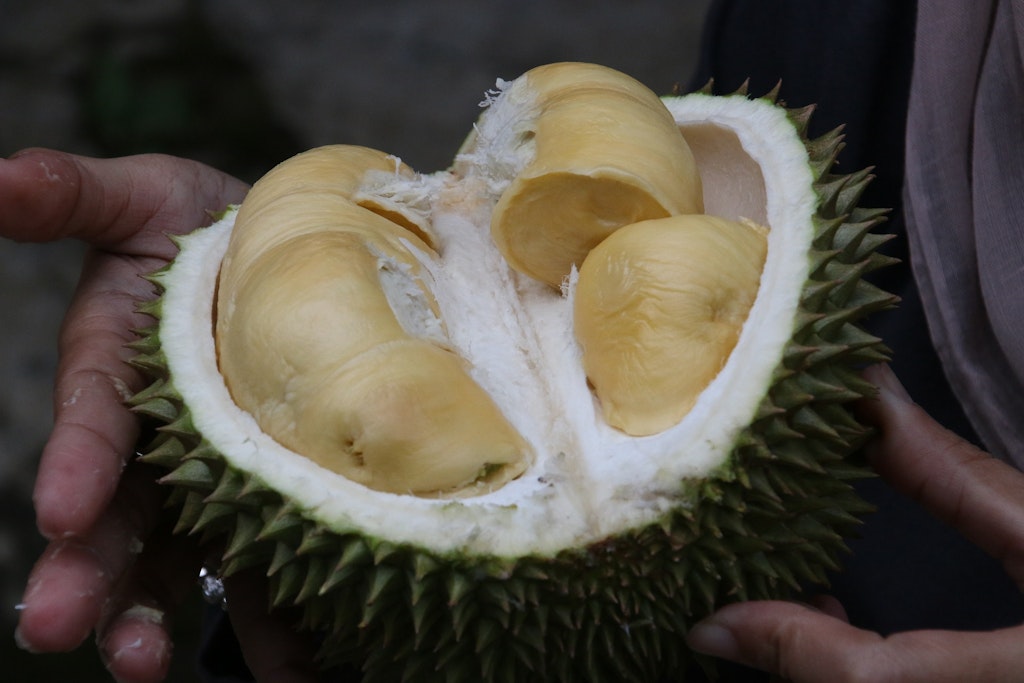
The Durian fruit is typically somewhat oval, around one foot wide and shrouded in considerable looking spikes. The fruit can weigh between two and seven pounds and is heavy enough that it can possibly pierce the skin, rather than the stem, by the fruit’s body holding it in its hands. However, its other feature is another feature – smell. The durian has a strong, rank odour that allows the outer shell and lingers long after removal of the fruit.
Durian Fruit Taste and smell are almost impossible to describe
For over a hundred years, venture out essayists have attempted to depict the taste and smell of durian but then, no place have we had the option to help somebody about it who has ever had its unique taste and smell Have not experienced it. In 1856, Alfred Russell Wallace sent a letter to Sir William Jackson Hooker describing the fruit: ‘A custard very enriched with almonds gives the best idea of it, but sometimes there are waves of flavour, Which is like mind cream-cheese. Onion chutney, sherry-wine, and other hot dishes’. Anthony Bourdain, who actually enjoys eating stinky fruit, tells Color after eating it: ‘You will smell your breath as if you were kissing your dead grandmother French’.
Young Durian vs Old Durian Fruit
The fruit changes drastically in a very short time. At the point when it gathered early, considered very nearly a vegetable on the grounds that the meat is hard, simple to deal with, and severe instead of sweet. Those who enjoy eating durian usually prefer to ripen the fruit more, when citrus and sweet flavours are more prominent. Although the fruit becomes messy from the point in which the sour cream compares. Normally, You can eat durians when they fall to the ground on their own. For shipping overseas, durians fruits can be harvest in the fields.
Types Of Durian Fruit
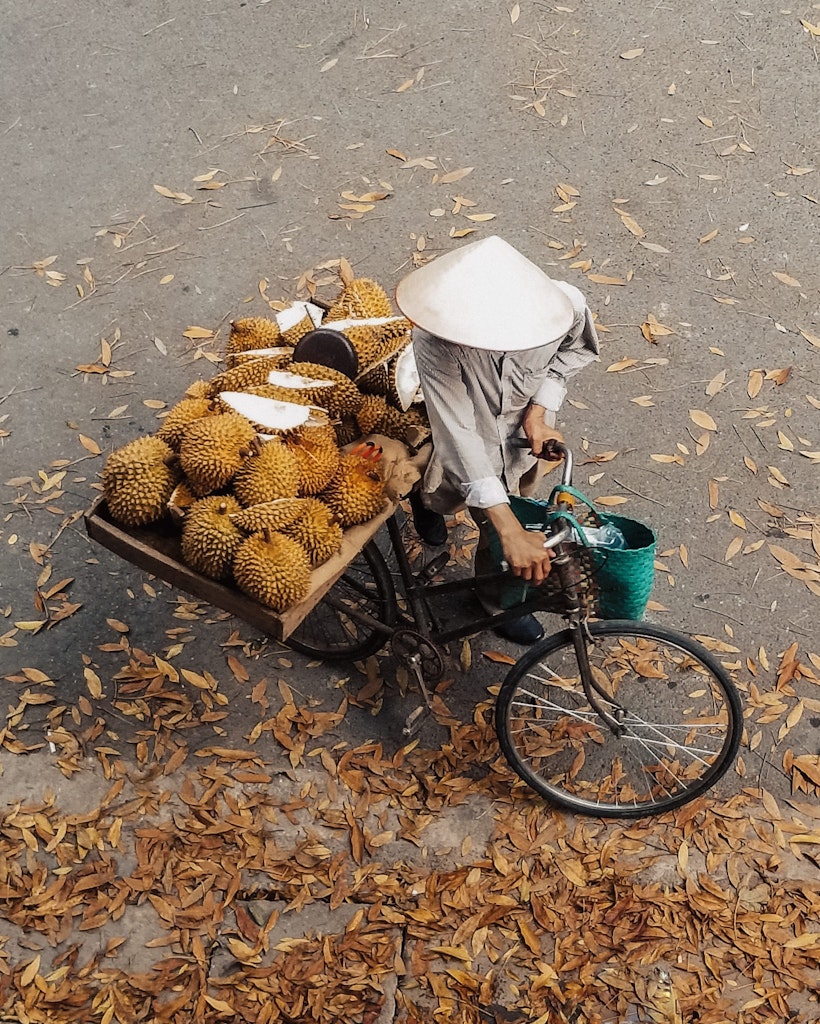
There are about 30 different varieties of durian. The fruit is native to Malaysia, Indonesia, and Borneo, Southern India, Cambodia, Vietnam, Thailand. Thailand is the biggest exporter of products of the fruit to numerous durian cultivates that produce a bigger number of varieties than local spots.
Durian Fruit inspires architecture
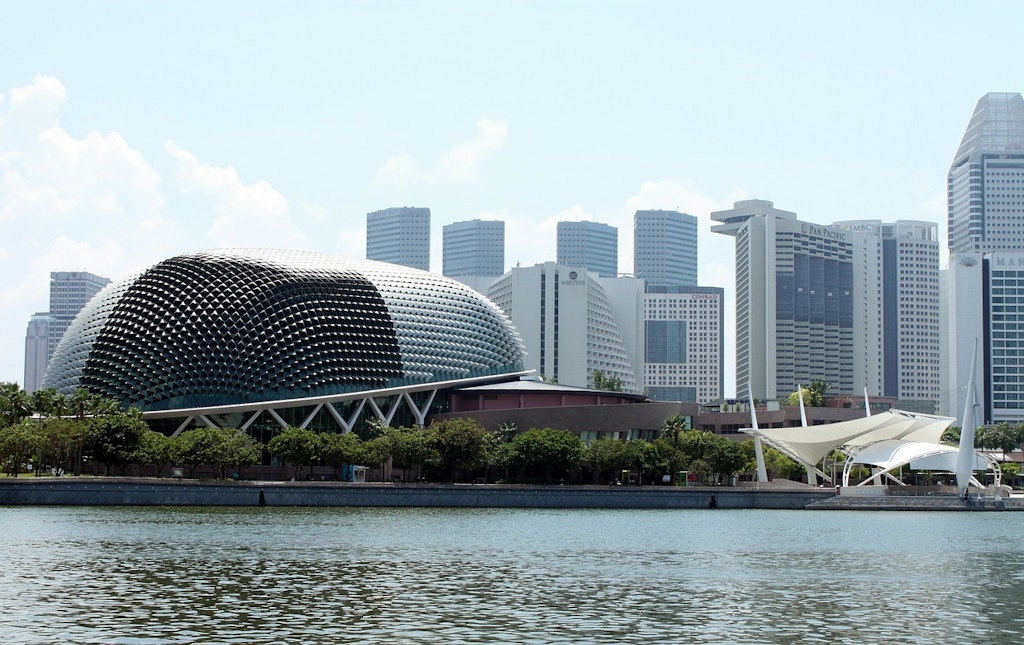
The official fruit of Singapore is the Durian. The building of Esplanade next to Marina Bay began as two glass domes, but when the design changed to include buildings covered with aluminium shades, the buildings had the appearance of a Durian,half-cut durian fruit.
It is all about the fruit. “The Durian Fruit”, fruit which is King Of fruits after having a strong smell and banned in many countries. In spite of all this still, it is one of the infamous and healthy fruit. If you are unable to stop yourself and want to encounter this fruit and experience the taste, then don’t waste your time. Book your Vacation to Singapore tour package & Malaysia with Pickyourtrail to encounter world Smelliest fruit. Pickyourtrail ensures to give you wide experience and memorable moments.
Related Itineraries
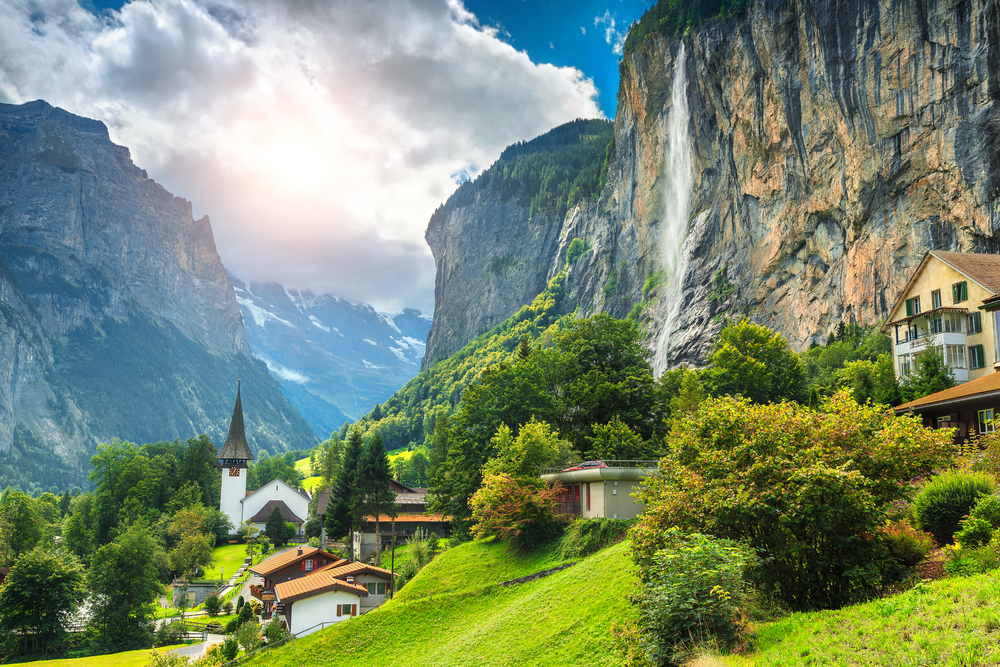
Relaxing 7 day Switzerland itinerary for the Honeymoon travellers
- Flights excluded
- 4 star accommodations
- 6 activities
- Private transfer
₹ 2,20,885
Starting price/person

London Dreams: Stay in London and wander around for 6 night stay
- Flights excluded
- 3 star accommodations
- 7 activities
- Shared transfer
₹ 1,07,442
Starting price/person

Beautiful 9 Nights France Tour Packages
- Flights excluded
- 3 star accommodations
- 6 activities
- Shared transfer
₹ 52,649
Starting price/person

Stunning 6 Nights Northern Lights Packages
- Flights excluded
- 2.5 star accommodations
- 3 activities
- Transfers excluded
₹ 64,954
Starting price/person

Fantastic 6 Nights Finland Northern Lights Tour Package
- Flights excluded
- 4 star accommodations
- 2 activities
- Shared transfer
₹ 69,369
Starting price/person

Amazing 10 Nights Netherlands Trip Package
- Flights excluded
- 2 star accommodations
- 9 activities
- Private transfer
₹ 52,895
Starting price/person

Magical 10 Nights Spain Tour Package
- Flights excluded
- 4 star accommodations
- 9 activities
- Shared transfer
₹ 1,17,742
Starting price/person

Europe Tour Packages For 6 Nights
- Flights excluded
- 4 star accommodations
- 7 activities
- Shared transfer
₹ 52,876
Starting price/person

Europe Trip Packages For 10 Nights
- Flights excluded
- 4 star accommodations
- 9 activities
- Shared transfer
₹ 73,921
Starting price/person

Romantic 8 Nights Bali and Vietnam Honeymoon Packages
- Flights included
- 4 star accommodations
- 6 activities
- Shared transfer
₹ 99,947
Starting price/person



